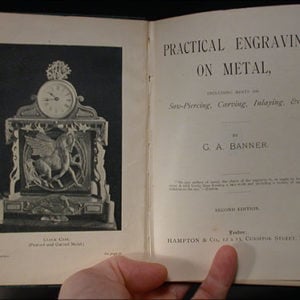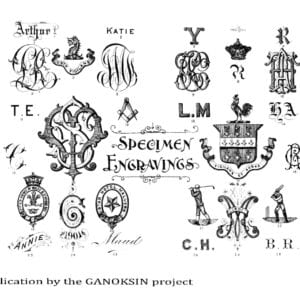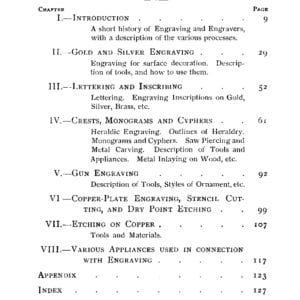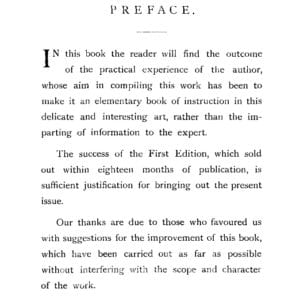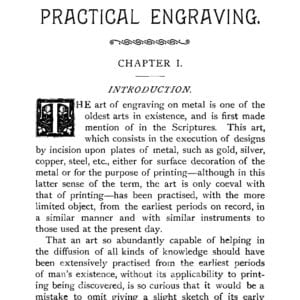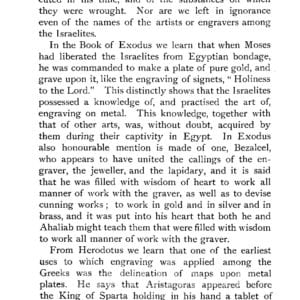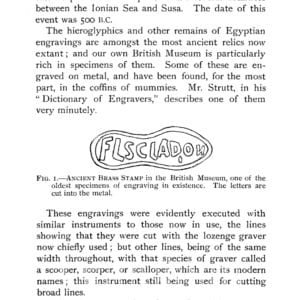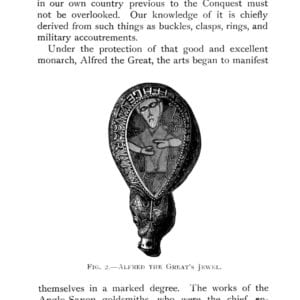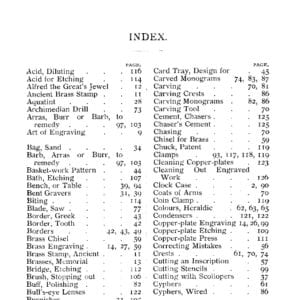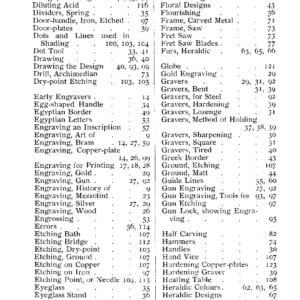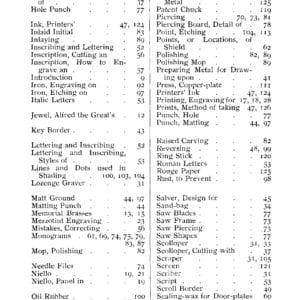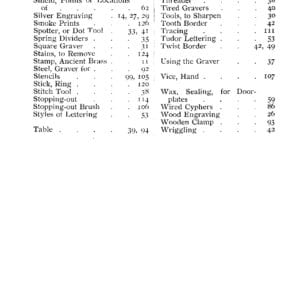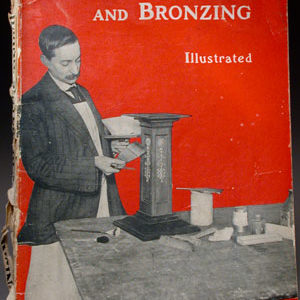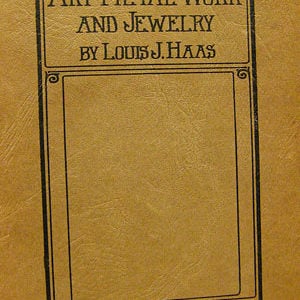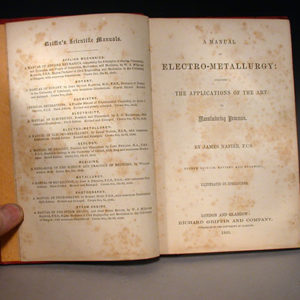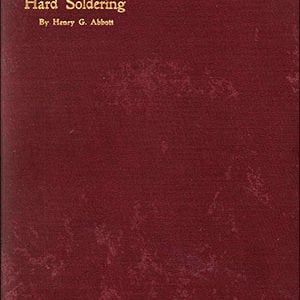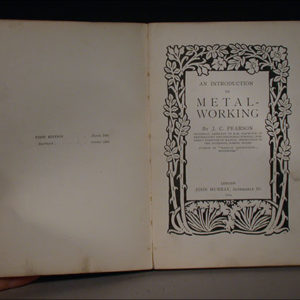Practical Engraving on Metal by G. A. Banner, 1899
The 1899, 117 page book is intended for the amateur, the learner. As with many books of this time it begins with a history, placing engraving in a context, and the Old Testament, proving the ancient origins of the technique and its uses. Egypt is addressed. Then leaps into medieval times. Grave brasses are extensively discussed. Picture engraving for books, printmaking (1423) as well. As niello workers are credited with the development of printing plates there are detail of how niello is made and used by goldsmiths. Printmaking history is addressed in terms of different ways working printing plates, mezzotint and more. Steel engraving and gun engraving is discussed.
The main chapters after the introduction include Gold and Silver Engraving, Crests, Monograms and Cyphers, Gun engraving, Copper Plate Engraving, Stencil Cutting and Dry Point Etching, Etching on Copper, Various appliances used in Connection with Engraving. Lots of detail on tools and using them throughout.
Graver handles, shapes and sharpening are fully described. A range of sandbags is suggested, stuffed tight with chalk as that will not scratch silver if it leaks out. Holding the metal, using the sand bag are shown. Some graver names differ from today, such as a Florentine finish graver being called a ‘threader’ or ‘sticher’, and flat gravers being called ‘scollopers’.
He describes how to create bent gravers for cutting inside bowls and other difficult places.
Odd tidbits are given, such as if your graver is not cutting then put it aside for a while, let it rest, and it will return to its former cutting condition. (hmmm-I will have to try that).
Layout methods are dealt with, including the use of gum gamboge, a yellow Thai plant resin that when ground and mixed with alcohol creates a durable ground on the metal that keeps a pencil line while you are working, a method also used for chasing and repousse layout. Laying out with some grease on the surface and a fine white powder is described, as is rubbing ink into an engraving to print copies onto other pieces of metal for multiples.
A number of edge treatments using different gravers and patterns is addressed. Extensive surface options and ideas are covered. There are many drawings and photos for this.
Lettering is addressed in great depth. Types include Roman, Italic, Egyptian, or block,
copper-plate, Old English, and Gothic. Spacing, layout, tools, flourishes, repairing mistakes and stroke directions are described. The use of chisels for carving brass is diagrammed, and the engraved out letters and shapes were filled with niello, or colored sealing waxes.
Heraldic work is really well done, with history, and information about the meanings of every part, more in depth than I have seen elsewhere. Really good. All the colors are represented by different cross hatchings, and all is very thoroughly described. Great drawings demonstrate his points. Japanese approaches to carving iron in sword guards are touched on. Saw piercing for monograms is detailed. The sawn shapes are then engraved, with sloping cuts and more. Lots of very clear ‘how to’ here.
This must be one of the earliest books to talk about gun engraving, and it too is thoroughly dealt with. A tip is to use a piece of copper to rub off the burrs formed from engraving and carving as it does not mark the steel.
Engraving plates for printing is addressed, tidbits like using a mirror to check the work are revealed. Dry point etching is described, as is copper intaglio etching in full detail, applying the resist, scratching through it, etching. This too is very thorough, and is a full description of how to do intaglio print-making.
The book ends with images and descriptions of clamping and holding tools for engraving, as well as tricks and tips. Interestingly he credits the engravers ball as an American invention. There is an appendix that covers cleaning copper plates, annealing them, hardening them after engraving, making printers ink, removing stains from paper, unacceptable lead based glue to attach paper to metal, a recipe to make chasing and repousse pitch, taking smoke prints of engravings (still used today-but with cello-tape),
There are dozens of good illustrations and drawings.
Charles Lewton-Brain © 2012
File Size: 9.33MB, 117 pages.
